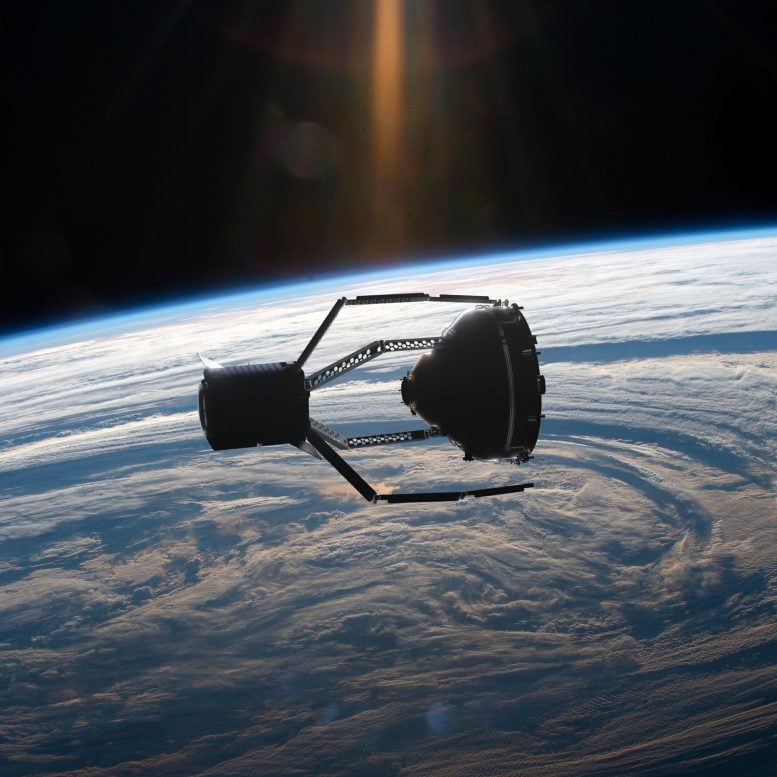
In 2025, the first active debris removal mission, ClearSpace-1, will rendezvous, capture, and take down for reentry the upper part of a Vespa (Vega Secondary Payload Adapter) from Europe’s Vega launcher. This was left in an approximately 800 km by 660 km altitude gradual disposal orbit, complying with space debris mitigation regulations, following the second Vega flight in 2013. ClearSpace-1 will use ESA-developed robotic arm technology to capture the Vespa, then perform a controlled atmospheric reentry. Credit: ClearSpace SA
ESA has signed an €86 million contract with an industrial team led by Swiss start-up ClearSpace SA to purchase a unique service: the first removal of an item of space debris from orbit.
As a result, in 2025, ClearSpace will launch the first active debris removal mission, ClearSpace-1, which will rendezvous, capture, and take down for reentry the upper part of a Vespa (Vega Secondary Payload Adapter) used with Europe’s Vega launcher. This object was left in a ‘gradual disposal’ orbit (approximately altitude 801 km by 664 km or 498 mi by 413 mi), complying with space debris mitigation regulations, following the second flight of Vega in 2013.
Paying for such a service contract rather than directly procuring and running the entire mission represents a new way for ESA to do business – intended as the first step in establishing a new commercial sector in space.
Along with part-purchasing this initial mission – ClearSpace itself will be raising the remainder of the mission cost through commercial investors – ESA is also contributing key technologies for flight, developed as part of the agency’s Clean Space initiative through its Active Debris Removal/ In-Orbit Servicing project, ADRIOS.
These include advanced guidance, navigation and control systems, and vision-based AI, allowing the chaser satellite to close safely on the target on an autonomous basis, as well as robotic arms to achieve capture.
Challenging achievements ahead
“Think of all of the orbital captures that have occurred up until this point and they have all taken place with cooperative, fully-controlled target objects,” explains ESA Director General Jan Wörner.
“With space debris, by definition no such control is possible: instead the objects are adrift, often tumbling randomly.
“So this first capture and disposal of an uncooperative space object represents an extremely challenging achievement. But with overall satellite numbers set to grow rapidly in the coming decade, regular removals are becoming essential to keep debris levels under control, to prevent a cascade of collisions that threaten to make the debris problem much worse.”
Luc Piguet, founder and CEO of ClearSpace comments: “At orbital velocities, even a screw can hit with explosive force, which cannot be shielded against by mission designers; instead the threat needs to be managed through the active removal of debris items.”
“Our ‘tow truck’ design will be available to clear key orbits of debris that might otherwise make them unusable for future missions, eliminating the growing risks and liabilities for their owners, and benefitting the space industry as a whole. Our goal is to build affordable and sustainable in-orbit services.”
Luisa Innocenti, Head of ESA’s Clean Space Office, adds: “The plan is that this pioneering capture forms the foundation of a recurring business case, not just for debris removal by responsible space actors around the globe, but also for in-orbit servicing: these same technologies will also enable in-orbit refueling and servicing of satellites, extending their working life. Eventually, we envisage this trend extending into in-orbit assembly, manufacturing, and recycling.”
European industry leads debris removal
ClearSpace – a spin-off company established by an experienced team of space debris researchers from EPFL, the Swiss Federal Institute of Technology in Lausanne – is leading an industrial team that includes companies from several European countries, and contributions will come from enterprises in Switzerland, the Czech Republic, Germany, Sweden, Poland, the United Kingdom, Portugal, and Romania.
With a mass of 112 kg (247 lb), ClearSpace-1’s Vespa target is close in size to a small satellite, while its relatively simple shape and sturdy construction make it a suitable first goal, before progressing to larger, more challenging captures by follow-up missions – eventually including multi-object capture.
The ClearSpace-1 mission will initially be launched into a lower 500 km (310 mi) orbit for commissioning and critical tests, before being raised to the target orbit for rendezvous and capture using a quartet of robotic arms, flying under ESA supervision. The combined ‘space robot’ chaser plus the Vespa target will then be deorbited to burn up in the atmosphere.

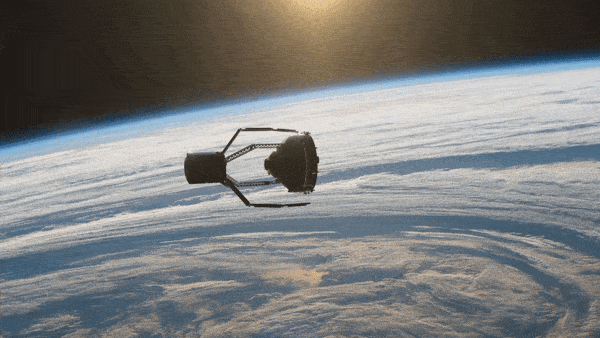
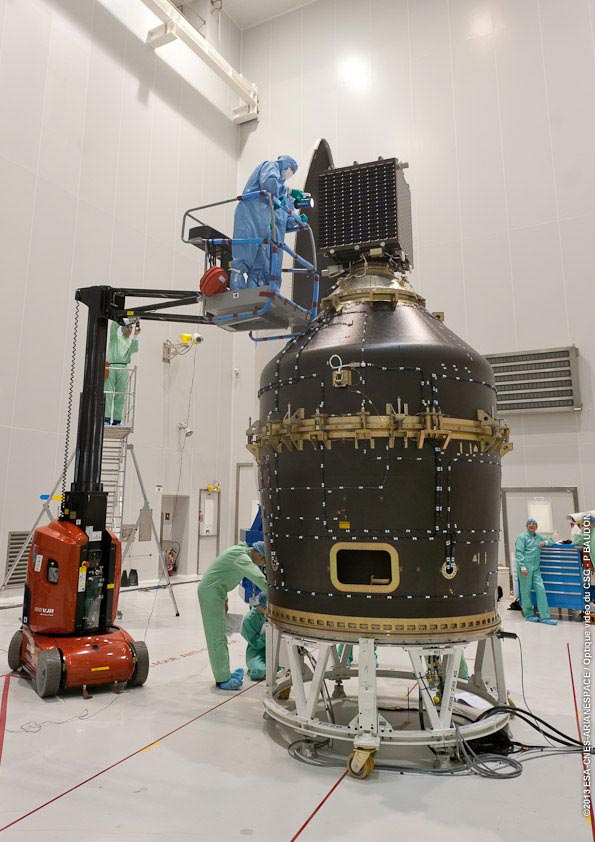
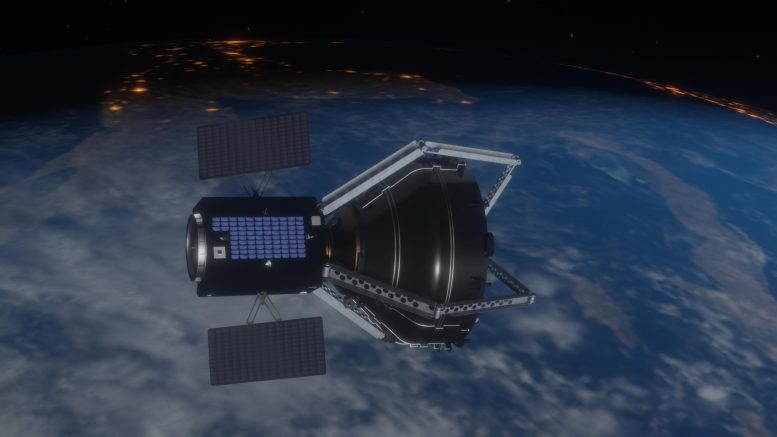
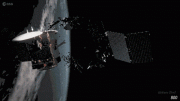
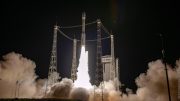
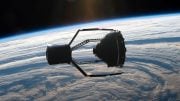


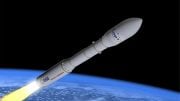

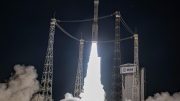
If one country defines space debris loosely, can they capture and recover another country’s satellites to learn its technology? Raises some interesting geopolitical issues considering satellites have military as well as domestic purposes.
“Burn up safely in the atmosphere”. More like, “Waste two spacecraft at the same time!”
Why not launch a robotic vehicle with an inflatable re-entry sheild and recover both for recycling/re-use?!
Oh, I forgot, we’ve learned nothing.
Shoot it into the sun ?
Humans, We will never learn…if we have rockets that can re-enter then why not? Plus whats the effects of all that constantly burning up in the atmosphere?
I like the idea behind the recent test satellite that extended a football-field long ribbon to increase its ballistic coefficient one million-fold, to reenter at end of useful life. A related idea that applies to uncooperative debris is throwing a huge windshield-sun-guard-protector sort of thing into a collision course with the debris, to snag and increase ballistic coefficient one million-fold.
I’m still sure the solution is to have a craft, preferably manned, that can collect debris and add it to it’s own mass. The simple version is that when it is very large, it can do a controlled decent and burn up safely over an ocean etc. The cooler version is the garbagenauts strip valuables off of the space ‘debris’ and/or and build a bigger station. Question: how is this not already a great tv show?
I think the collection of objects floating around the earth is more important that loosing any of our space units. The international space station for example. When does it become impossible to track all that junk floating around that something important gets destroyed. have a lottery with other countries that can launch a spacecraft to collect the most space junk. the prize would be a one month trip on a cruse ship. I’m an artist and I love to make things out of the stuff we throw away. We should never toss things into space because it will come back at you someday in an unsafe way. Think about it ? I was an aircraft mechanic in the air force. The flight line was the most important part of my job keeping it clean and safe for all my planes landing and taxing safe. that says enough.